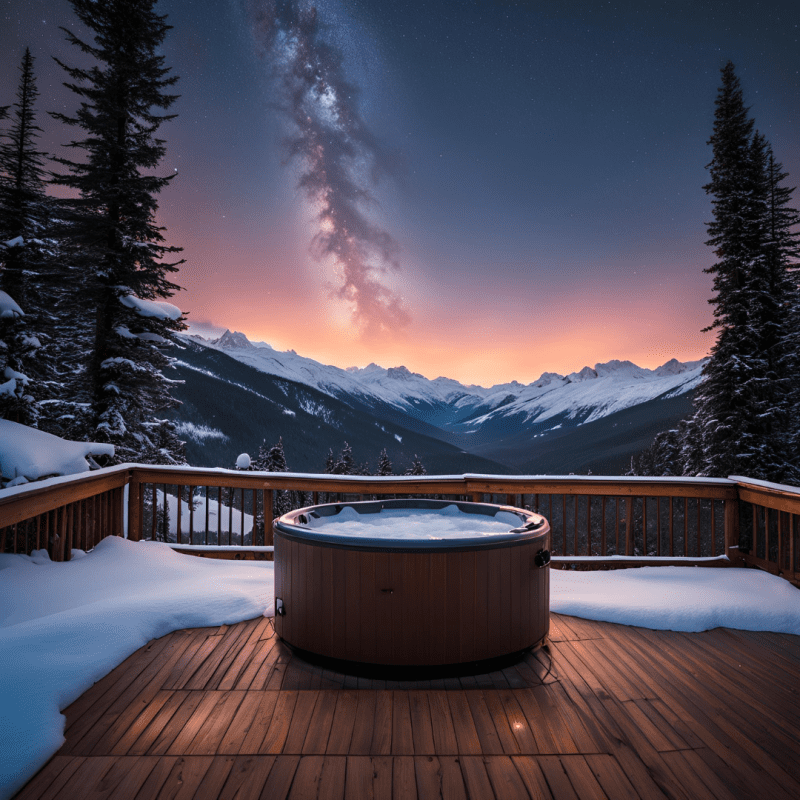Blogpool, Construction, Hot Tubs, Maintenance
Choosing the Perfect Location for Your Hot Tub: What to Consider
Finding the right spot for your hot tub can make or break your overall experience. While the idea of sinking into warm, bubbling water sounds ideal, the practicalities of choosing the right location are just as crucial. In this guide, we’ll cover everything you need to consider before installing your hot tub to ensure it’s in the best possible spot for use, maintenance, and relaxation.
Size and Space: How Much Room Do You Really Need?
The first step in deciding where to put your hot tub is determining how much space it will occupy. You’ll need to consider not just the size of the tub itself but also the surrounding area. Hot tubs come in various sizes, from small 2-person models to larger tubs that can accommodate 6 or more people. Before you buy, measure the space you have available.
Key considerations include:
- Clearance Space: Ensure there is enough room around the tub for cleaning, maintenance, and getting in and out comfortably. At least 18-24 inches of clearance is recommended around all sides.
- Access for Installation: Your chosen spot needs to be easily accessible for installation. If your tub needs to be craned into position, make sure the location can accommodate this.
Foundation and Weight Support
One of the most important factors to consider is the foundation on which your hot tub will sit. A hot tub, when filled with water and people, can weigh over 1,500kg (1.5 tonnes) or more, depending on its size. Ensuring the location can support this weight is critical to avoid future issues.
Options for foundations include:
- Concrete Base: A level concrete pad is the most stable and long-lasting foundation for your hot tub. Ensure it’s at least 4 inches thick to bear the weight.
- Decking: If you plan on placing your hot tub on a wooden deck, ensure that it is reinforced to handle the weight. You may need to consult a professional to verify the deck’s load-bearing capacity.
- Paving Slabs: These are another popular option, but they must be laid level to ensure the hot tub doesn’t tilt. This could lead to uneven pressure on the tub and affect water levels.
Proximity to Utilities: Power and Water Supply
Your hot tub needs both power and water, so it’s vital to place it near these utilities:
- Electricity: Hot tubs require a dedicated electrical circuit. It’s important to hire a qualified electrician to install this circuit safely. You’ll want the hot tub relatively close to your home’s power supply to avoid long cable runs.
- Water Source: While hot tubs don’t need to be connected to a permanent water supply, you’ll need to fill them from a hose, so proximity to an outdoor tap can make refilling much easier.
Privacy and Ambiance
A hot tub is your personal relaxation zone, so ensuring privacy is crucial for an enjoyable experience. Here’s how you can create a private and serene atmosphere:
- Landscaping: Adding plants, hedges, or shrubs around your hot tub can create a natural privacy screen. You’ll also want to consider the view from the tub—can you make the area more visually appealing by adding flower beds, rocks, or a water feature?
- Fencing: If you’re overlooked by neighbors, installing a fence or trellis around the hot tub area can give you the privacy you need. You could also use climbing plants like ivy or wisteria to enhance the look.
- Gazebos and Shelters: Building a gazebo or pergola over your hot tub not only adds privacy but can also help protect you from the UK’s unpredictable weather. Shelters are particularly useful during the rainy months or to shield from wind.
Shelter and Protection from the Elements
Speaking of weather, the UK’s climate is known for its unpredictability. Wind, rain, and snow can all affect the comfort and longevity of your hot tub. Placing your hot tub under a shelter or at least using a high-quality cover can prevent debris like leaves or dirt from falling into the water, reduce heat loss, and extend the life of the hot tub.
Options for shelter include:
- Gazebo: A classic wooden or metal gazebo can provide the perfect mix of shelter and style. Add curtains or shades for additional privacy or to block wind.
- Retractable Covers: If you’re looking for a temporary solution, retractable covers or awnings can be installed and pulled out when needed, offering flexibility.
- Windbreaks: If you live in a particularly windy area, building a windbreak with fencing or dense shrubs can prevent wind chill and keep the area more comfortable.
Consider Safety and Accessibility
When placing your hot tub, safety should be a top priority, particularly if you have children or elderly guests. Steps, handrails, and non-slip surfaces around the hot tub can make getting in and out easier and safer. You should also ensure there’s adequate lighting around the hot tub for evening use.
Accessibility tips:
- Steps and Rails: Install sturdy, slip-resistant steps with handrails to assist with entry and exit, especially for people with limited mobility.
- Non-Slip Surfaces: Consider placing rubber mats or anti-slip decking around the tub to reduce the risk of slipping when the surrounding area gets wet.
- Lighting: Pathway lights, overhead lights, or even string lights can make the area safer at night and create a cozy atmosphere.
Noise Considerations
Lastly, think about the noise levels. While most modern hot tubs run quietly, the sound of bubbling water and conversation can carry. If your hot tub is close to your home or a neighbor’s property, you may want to install soundproof fencing or plant dense hedges to help block out noise.


